What Is Magnesium For?
Not only can Magnesium stop the muscles in your back from contracting & increasing your back pain, but it can also put an end to your charlie horse leg cramps.
If your body has too much calcium or not enough magnesium, the muscles in your back or other areas will stay contracted. It’s the contracted muscles that cause the pain.
Considering more than 80% of Americans are deficient in magnesium, there’s a good possibility that you could be too.

1. 18 Symptoms For Magnesium Deficiency
2. 16 Diseases Magnesium Deficiency Can Aggravate
3. Sources Of Magnesium (including food), How Much You Should Take, When’s The Best Time and Price
4. What Depletes Magnesium In Your Body
5. People At High Risk
6. WARNINGS: Side Effects Of Too Much Magnesium & Who Should Never Take It
7. My Advice

SYMPTOMS FOR MAGNESIUM DEFICIENCY
Magnesium is a macro-mineral. Many people don’t realize their aches & pains could be caused from being low in magnesium. That’s why it’s important to know what the symptoms for low magnesium are.
I like to warn people whenever I can. According to Dr. Carolyn MD, at the Nutritional Magnesium Association, it’s not likely you’ll get an accurate blood test from your doctor when it comes to low magnesium levels. Blood tests only test the magnesium in your blood. Your blood stream contains less than 1% of the magnesium your body has. Your muscle tissue has ¼ of it & 3/5 of it is in your bones.
Because they’re numerous symptoms for low magnesium, I’ll start with the ones that could be increasing your back pain. The following 9 symptoms could mean you’re low in magnesium.
■ Constantly Need Chiropractic Treatment
■ Muscle Twitches
■ Muscle Weakness
■ Muscles That Go Into Spasms
■ Chronic Back Pain
■ Nerve Problems
■ Exhaustion From Exercise
OTHER SYMPTOMS FOR LOW MAGNESIUM ARE:
Did you know that Magnesium is responsible for over 300 vital functions in the body? It’s needed for proper utilization of calcium, potassium, Vitamin K, Vitamin D and many other nutrients. Magnesium is an electrolyte that is needed for the proper growth and maintenance of bones, muscles & nerve functions. It’s also an effective anti-inflammatory nutrient.
Besides from back pain, check the following 9 low magnesium symptoms. Are you experiencing some of these too?
■ Fatigue
■ Irritability
■ Anxiety
■ Headaches/Migraines
■ Obesity
■ Constipation
■ Depression
If you suffer from other health issues besides back pain, being low in magnesium could be intensifying the problem even more. Below are 16 diseases low magnesium levels can aggravate:
■ Blood Clots
■ Bowel Disease
■ Cystitis
■ Depression
■ Detoxification
■ Diabetes
■ Fatigue
■ Hypertension
■ Hypoglycemia
■ Insomnia
■ Kidney Disease
■ Liver Disease
■ Migraine Headaches
■ Raynaud’s Syndrome
They’re four main sources of magnesium. You can get it in an oil, liquid, pill form or from the food you eat.
Be careful what type of Magnesium you take. Many people have problems absorbing some forms. Some types of Magnesium can even cause diarrhea.
LIQUID MAGNESIUM SPRAY
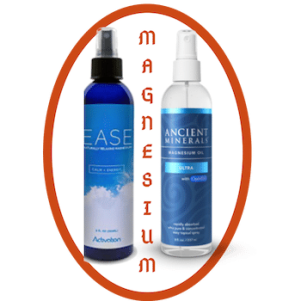 Most liquid magnesium sprays are non-greasy. They’re many different kinds on the market.
Most liquid magnesium sprays are non-greasy. They’re many different kinds on the market.
I always use the spray. That way I don’t have to worry about taking too much. Your skin usually doesn’t absorb more than it requires.
Benefits Of Magnesium Spray Oil
It’s rapidly absorbed by the skin & more bioavailable because it bypasses the digestive system & kidneys. Because Magnesium supplements pass through the kidneys, only 20-55% is absorbed by your body.
The good thing about liquid magnesium spray is, it would be next to impossible to take too much. The skin usually absorbs just the amount it needs.
If you’re thinking about purchasing the spray, make sure you look for one with the following 5 ingredients on its label:
■ Not a Synthetic
■ It’s Highly Absorbable
■ 100% Toxin Free
■ Skin Irritant & Residue Free
■ Free From Side Effects
The liquid magnesium spray I use is called Ease Magnesium. It’s the highest grade of magnesium available internationally. It doesn’t contain any other minerals or contaminants. It’s also one of Amazon’s choices. Another excellent brand is Ancient Minerals.
 There are different brands for magnesium spray. Remember, make sure it’s not a Synthetic.
There are different brands for magnesium spray. Remember, make sure it’s not a Synthetic.
Check all both companies below. Just because I like certain brands doesn’t mean everyone should. At the time I wrote this article, the cheapest place was at e-Bay.
MAGNESIUM PILLS
 If you’d prefer to get your magnesium in capsule form, not all forms of Magnesium are the same.
If you’d prefer to get your magnesium in capsule form, not all forms of Magnesium are the same.
When you purchase Magnesium in pill form, look for Glycinate or Threonate. Both provide the highest levels of absorption. They’re also gentle on the bowels.
Some other forms of Magnesium are Chloride & Lactate but they only contain about 12% magnesium. Carbonate contains 45% & Oxide has 60%. I would stay away from Magnesium sulfate or hydroxide.
The cheapest source of magnesium is magnesium oxide, which is poorly absorbed by your body. Oxide tends to give many people diarrhea if they take a little too much. Also, people who get diarrhea from taking magnesium pills could mean that their body isn’t absorbing it.
If you’d prefer to take magnesium in capsule form, Dr. Mercola’s is one of the best magnesium supplements on the market. It has superior absorption & is gentle on the bowels. They’re vegan & GMO-free. They don’t contain binders, fillers, gluten, dairy, soy, wheat, yeast, sugar, corn, artificial color, fillers, preservatives or animal products.
 There are different brands of magnesium you can purchase. Like I said earlier, look for Glycinate or Threonate.
There are different brands of magnesium you can purchase. Like I said earlier, look for Glycinate or Threonate.
Check all 3 companies below to get the best price.

WHAT FOODS ARE RICH IN MAGNESIUM?
Yes, low magnesium levels in your body could be increasing your back pain. It can cause your muscles to stay contracted. Chronic back pain, stiff & aching muscles, nerve problems, muscle weakness, cramps & many more things are partially caused by not having enough magnesium.
Foods with highest magnesium per milligram, regardless of typical intake, are:
■ 100 grams Halibut = 26 mg magnesium
■ 100 grams Mackerel = 60 mg magnesium
■ 1 Cup Boiled Spinach = 157 mg magnesium
■ 100 grams Bran Breakfast Cereal = 60 mg magnesium
■ 1 oz almonds – 80 mg magnesium
Foods that are high in magnesium are usually high fiber foods. High levels of magnesium are found in legumes, whole grains, vegetables (especially broccoli, squash, and green leafy vegetables), seeds, and nuts (especially almonds). Other sources are chocolate, coffee, dairy products, meats or “hard” water.
TOP 10 MAGNESIUM RICH FOODS
1. Spinach – 1 cup: 157 milligrams
2. Chard – 1 cup: 154 milligrams
3. Pumpkin seeds – 1/8 cup: 92 milligrams
4. Yogurt or Kefir – 1 cup: 50 milligrams
5. Almonds – 1 ounce: 80 milligrams
6. Black Beans – ½ cup: 60 milligrams
7. Avocado – 1 medium: 58 milligrams
8. Figs – ½ cup: 50 milligrams
9. Dark Chocolate – 1 square: 95 milligrams
10. Banana – 1 medium: 32 milligrams
RECOMMENDED DAILY ALLOWANCE FOR MAGNESIUM
Children: 1 to 3 years – 80mg
Children: 4 to 8 years – 130mg,
Children: 9 to 13 years – 240mg
Boys: 14 to 18 – 410mg
Girls: 14 to 18 – 360mg
Men: 19 to 30 – 400mg
Men: 31 plus – 420mg
Women: 19 to 30 – 310mg
Women: 31 plus – 320mg
Pregnant Women: 19 to 30 – 350mg
Pregnant Women: 31 plus – 360mg
Don’t forget, you’re getting magnesium from different food sources you’re consuming every day. Also, your body will require extra magnesium if you eat foods that are high in fat, protein, sugar or salt. You’ll also need extra magnesium if your Taking extra Vitamin D or Calcium tablets.
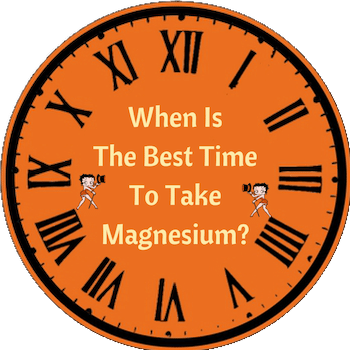 BEST TIME TO TAKE MAGNESIUM
BEST TIME TO TAKE MAGNESIUM
There’s no scientific proof, that I could find, on the best time of day to take magnesium.
Some experts say it’s better to take it 1-2 hours before you go to bed. Their theory is, it helps to relax the body & give you a good nights sleep. Other experts say that magnesium can be better utilized by the body at night when you’re at sleep.
If you’re using magnesium spray oil, it’s preferable to apply it to clean skin. Don’t put body lotion on first. Don’t spray it anywhere on the face. Rub the oil in good. The oil takes about 30 minutes to be absorbed.
WHAT DEPLETES YOUR BODY OF MAGNESIUM?
The three major things that deplete your body of magnesium are stress, prescription drugs and the food we eat.
What many people don’t realize is, consuming a lot of fat, sugar, salt, synthetic vitamin D, phosphates, protein, and supplemented calcium, actually increases the need for magnesium in the body.
FOOD: Most of the soil that grains, fruits, and vegetables are grown on have been depleted of magnesium. Even if you’re purchasing organic foods, they’re still grown on soil that has low magnesium levels.
STRESS: When you’re under mental or physical stress, magnesium is released from your blood cells. It then goes into your blood plasma & is excreted into the urine. The greater your level of stress is, the more magnesium you lose.
PRESCRIPTION DRUGS: When it comes to prescription drugs, some of them contain fluoride. Some of these drugs are cholesterol, anxiety and painkillers for arthritis. The magnesium in your body binds to fluoride & in turn drains the magnesium from your body.
SALT: Salt flushes magnesium out of our bodies
SUGAR: Sugar excretes magnesium through the kidneys & urine
PEOPLE AT RISK FOR MAGNESIUM DEFICIENCY
Alcoholics – The more alcohol you consume the more magnesium is depleted from your body
Diabetics – Diabetes that is poorly controlled will reduce how much magnesium the body absorbs
Elderly – As we age our bodies produce less magnesium. Also, because as people get older they can incur other health issues, the body has a harder time absorbing the mineral.
Other Diseases – A few other diseases that can affect magnesium absorption are people with stomach infections, immune diseases or inflammatory bowel disease. There are others but these are the main ones.
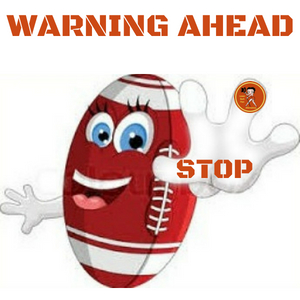
SIDE EFFECTS OF TOO MUCH MAGNESIUM
Knowing the side effects is just as important as knowing the symptoms. In my opinion only, it’s more important.
If you think you’re deficient in magnesium, don’t start taking a high dosage to try & correct it. High doses can cause serious side effects. Side effects such as irregular heartbeat, low blood pressure, confusion, slowed breathing, coma, and death.
For some people, magnesium can give you an upset stomach, nausea, vomiting or diarrhea.
WHO SHOULDN’T TAKE MAGNESIUM?
Blood Clotting – For people with bleeding disorders, Magnesium SLOWS blood clotting. It could increase the risk of bleeding or bruising.
Heart Block: If you Know you have a heart block, high doses or magnesium whether it’s in pill form or delivered by IV should not be taken.
Kidney Problems – People who already have kidney problems could have trouble clearing magnesium from their body. If you take extra magnesium, it could cause magnesium build-up to the point of dangerous levels.
Magnesium Interactions With Perscription Drugs – If you’re taking any of the following prescription drugs, CONSULT YOUR DOCTOR FIRST. If you’re on antibiotics, Bisphosphonates, High Blood Pressure pills, muscle relaxants or water pills.

 MY ADVICE
MY ADVICE
I first started taking magnesium because of the horrible leg cramps that were waking me up at night.
It did stop the charlie horse leg cramps but as a bonus, I found it relaxed the muscles in my back. After I did a lot of research, I found out that magnesium plays a major role in our bodies. That was what motivated me to write this article.
I started taking the liquid form of magnesium because the body absorbs it faster. If I run out or I’m on holidays, I take the capsule form. Don’t expect miracles the first day. It took about a month before I noticed a difference. It doesn’t matter what I try, I always give it 30 days. If it has helped, I’ll try it for another 30 days. After about 2 months of taking magnesium, I could notice a big difference.
One of the differences it made was when I got out of bed in the morning. Usually when I got up in the morning, my back muscles were so tight I could hardly bend over. My muscles used to tie in knots after I came home from the gym too. Actually, I was experiencing a few things on the list I gave you above. Magnesium does make a difference.
To start with, don’t go out and buy magnesium tablets that have 400 mg of magnesium in them.
First, go over my Food List above & take a rough estimate of how much magnesium you’re consuming each day. Subtract the amount of magnesium that your body requires each day from my chart above (Recommended daily allowance for magnesium) This will give you some idea of the strength of the supplement you should purchase.

Thanks for stopping by & taking the time to read my article on, Magnesium and Back Pain.

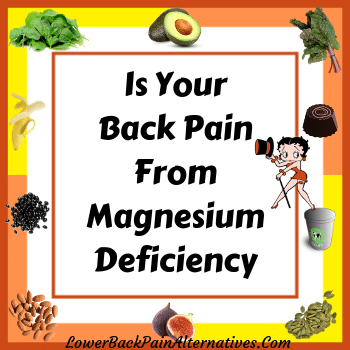





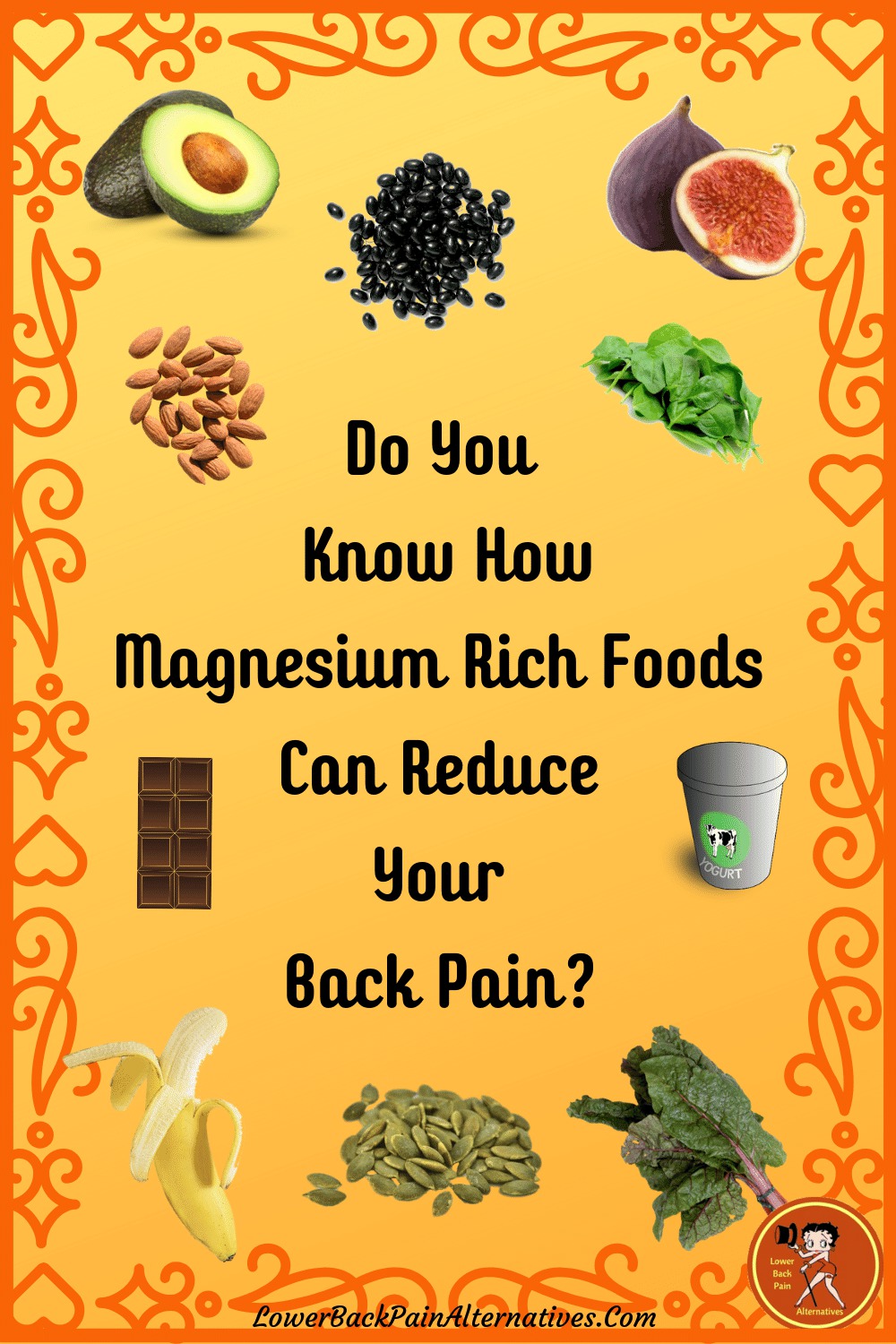

I’m glad my article has helped you. All the best to you.
I’ve just went through the article. It is informative. I jotted down what I need to buy and looking forward to a new me.
Article much appreciated.
Naomi
Hi Rumon,
Thanks for your nice comment. I’m glad you enjoyed my article on, Magnesium & Back Pain. I’m not quite sure where you got the name Mary jo Harrison. My name is Darlene.:) Anyways, I was happy to hear you’ll be one of my new readers. All the very best to you, Rumon.
Hello Mary jo Harrison,
Thank you for your valuable post about magnesium and back pain. Before i had know full idea about magnesium and back pain. but i got a idea from read your article. keep it up. now i am your new reader.
Hi Mary Jo,
Thanks so much for your comment. That’s incredible how much magnesium has helped you. I’m glad to hear that. I know I used to wake up a couple of times during the night with such terrible leg cramps. They have now stopped completely with using magnesium. It helped me too with my migraines.
Took magnesium to help keep muscle aches to a minimum after starting a cardio class at gym. In meantime, I noticed my weather triggered migraines are decreased in intensity or no longer occur. My ‘too high to be normal but to low to be high’ blood pressure is now well in the normal range. This is what brought me to your site. My back pain, spasms as result of an injury is significantly decreased. I wanted to find out why! My goal is to keep it up. My normal back pain rating on a scale of 1-10 is a steady 6. The injury location makes every breath, being supine or seated agony. Prescription pain meds did little for the pain. They only kept me in a dog. I stopped them voluntarily years ago. I had no luck at first until a chance encounter at gym. Migraines came up. I was told she was instructed to use magnesium spray. It hit me like a brick taking (very cheap) magnesium helped migraines. I wondered what else it was doing to me. There is strong possibility magnesium is the reason for that slight drop in BP to normal (120-130/ 72-85) decreased to (106-112/60-70). Magnesium may help get my chronic Vit D3 low to normal. But I am 99% certain that magnesium did reduce those back spams and help lower my pain. I went from constant pain blocking and minimizing behavior to wondering why its so low. A chance action, a chance encounter and I have a new outlook on things